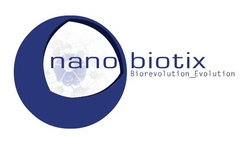
Nanobiotix, a late clinical-stage nanomedicine company pioneering new approaches to the treatment of cancer, has announced its first set of clinical data from its Immuno-Oncology (IO) programme, showing the potential ability of NBTXR3 to transform "cold" tumours into "hot" tumours.
Laurent Levy, chief executive officer of Nanobiotix said, "Being able to transform cold tumours into hot tumours is one of the most challenging and promising topics in oncology. This preliminary clinical data indicates that NBTXR3 could play a key role in unlocking this potential. Given NBTXR3's universal type mode of action and good safety profile, NBTXR3 could change the treatment landscape in numerous solid tumour cancers."
Many tumours exhibit little or no response to therapies targeting the immune system and are considered "cold". The explanation for the lack of response in its simplest form is a lack of immunogenicity. The ability of NBTXR3 to generate intratumoral immunogenic cell death (ICD) could be a key to significantly increase the number of patients who can engage their immune system to fight their cancer.
To undertake this research, Nanobiotix used the available patient samples from its more advanced indication of soft tissue sarcoma -- a typical "cold" tumour. These findings demontrated that NBTXR3 plus radiotherapy induces a specific adaptive immune pattern, which could potentially contribute to converting a "cold" tumour into a "hot" tumor. In this study, radiotherapy alone did not show any impact on triggering adaptive immune response.
Specific adaptive immune pattern induced by NBTXR3 when exposed to radiation therapy in Soft Tissue Sarcoma (STS) patients (#e14615). Jerome Galon, Marick Lae, Zsuzsanna Papai, Philippe Rochaix, Laszlo Csaba Mangel, Bernhard Mlecnik, Fabienne Hermitte, Zoltan Sapi, Martine Delannes, Tamas Tornoczky, Anne Vincent-Salomon, Sylvie Bonvalot; INSERM, Paris, France; Institut Curie, Paris, France; Magyar Honvedseg Egeszsegugyi Kozpont, Budapest, Hungary; Institut Universitaire du Cancer Toulouse Oncopole, Toulouse, France; Pecs University, Pecs, Hungary; HalioDX, Marseille, France; Semmelweis University, Budapest, Hungary.
In this study, tumours from the ongoing two-arm phase II/III clinical trial were examined both pre- and post-treatment in patients with locally advanced soft tissue sarcoma who had received either NBTXR3 with radiotherapy (14 patients) or radiotherapy alone (12 patients).
The results observed in the post-treatment examination of patients who received both NBTXR3 and radiotherapy, showed a significant increase of immune cell infiltration (CD3+, CD8+). In contrast, there were no differences observed between pre- and post-treatment examination where patients received radiotherapy alone. Similarly, patients who received NBTXR3 plus radiotherapy were found to have an increased immunoscore post-treatment, compared to those who received radiotherapy alone.
The upregulation of pan-immune gene expression and specifically, the expression of adaptive immunity genes between pre- and post-treatment, was pronounced in the post-treatment results of patients who received NBTXR3 plus radiotherapy compared to those who received radiotherapy alone.
Furthermore, a functional analysis of upregulated genes in NBTXR3 plus radiotherapy showed a specific enrichment of cytokine activity (IL7, IFNA, IL16, IL11, IFNG), adaptive immunity (RAG1, GZMA, TAP1, TAP2, TBX21, STAT4, IFNG, LCK, LTK, CD37, CD22) and T-cell receptor signaling pathway (CD28, CTLA4, CD274, BTLA, TIGIT, CD40LG, CD5, CD3E, ZAP70).
The initial data suggests NBTXR3's potential as an IO agent that could, on its own, trigger a specific immune response against the tumour. A number of upregulated genes correspond to existing or promising IO targets, enabling potential combination of NBTXR3 with therapeutic approaches, like products targeting PD1, PDL1, CTLA4, etc. This data requires confirmation in additional studies.
Many IO combination strategies focus on 'priming' the tumour, which is now becoming a prerequisite of turning a "cold" tumour into a "hot" tumour.
Compared to other modalities that could be used for priming the tumour, NBTXR3 could have a number of advantages: the physical and universal mode of action that could be used widely across oncology, the one-time local injection and good fit within existing medical practice already used as a basis for cancer treatment, as well as a very good chronic safety profile and well-established manufacturing process.
The new clinical data and previous pre-clinical data indicate that NBTXR3 could play a key role in oncology and could become a backbone in immuno-oncology.
Nanobiotix, linical data, nbtxr3